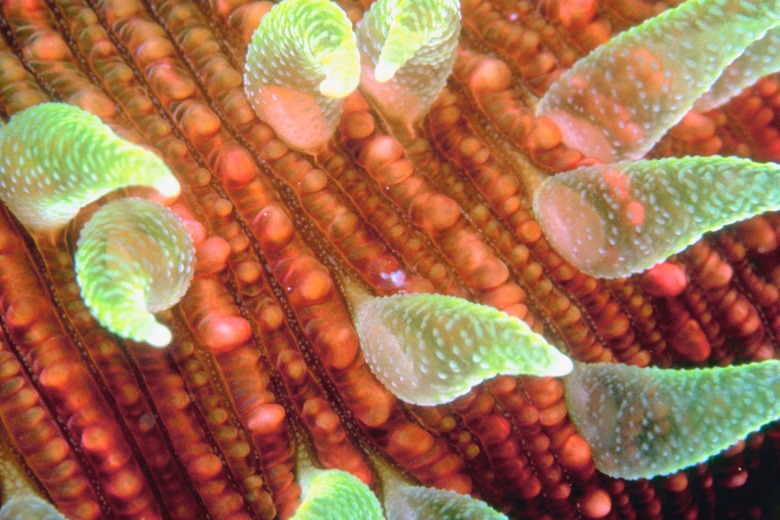Does Natural Selection Operate On Genotype Or Phenotype?
In Darwin's 1859 book "On the Origin of Species" he asked, can it be a surprise that "variations useful in some way to each being in the great and complex battle of life, should sometimes occur in the course of thousands of generations?" Wouldn't those variations, he argued, give individuals with advantageous traits "the best chance of surviving and of procreating their kind?" His summary: "This preservation of favourable variations and the rejection of injurious variations, I call Natural Selection." Natural selection is a result of the environment selecting for advantageous physical characteristics — the phenotype — in a population of organisms. When these characteristics are heritable, natural selection also has long-term effects on a population's gene pool.
Natural Selection
Natural Selection
Many species exhibit variations in their physical traits, and often these traits occur along a continuum. Height or hair color are examples. A natural range of variability may exist in those traits among all the members of a species. Imagine, for example, a butterfly species that has a distribution of tongue length, say, from 12 millimeters to about 30 millimeters. If there is a change to a predominance of long, tubular flowers in their environment, then butterflies with longer tongues will have an easier time getting food. Those butterflies could be healthier than others and more successful at breeding, or they may be more likely to survive long enough to reproduce.
Phenotype and Environment
Phenotype and Environment
As in the butterfly example, natural selection occurs when an organism's physical characteristics make it either more or less suited to thrive in an environment. The physical characteristics are called the phenotype; therefore, natural selection works directly on phenotype. The phenotype of an organism is determined by both environmental influences and genotype. That is, as an organism grows and develops, environmental factors can influence its size and other physical characteristics; but when it is conceived, many of its characteristics are predetermined by genotype. Therefore, the influence of environment on the phenotype of a population of organisms gets translated to an influence on that population's genotype.
Phenotype and Genotype
Phenotype and Genotype
The connection between genotype and phenotype is not necessarily simple and direct. That is, there is not a one-to-one correlation between gene and trait; it's not always as simple as one gene controlling one trait. Thinking of the butterfly example, the butterflies with long tongues thrive and produce more offspring. Therefore, over time, the gene or genes that code for long tongues become more common in that population of butterflies. That doesn't necessarily mean, however, that the next generation of butterflies will all have long tongues. That is due to the complex relationship between genotype and phenotype. Even if a single gene were responsible for long tongues, three-quarters of the offspring of long-tongued parents could carry a short-tongue gene. Many physical characteristics are influenced by multiple genes, though, which makes the situation even more complicated.
The Gene Pool
The Gene Pool
An even more important measure of genetic or genotypic change is the frequency of all the genotypes in all members of a species. That's called the gene pool, and it represents the total possible variation in a genetic trait.
Returning to the butterfly example, when long-tongued individuals are more suited to the environment, the next generation of butterflies will not necessarily have a greater percentage of long-tongued genes in their gene pool. Over time, though, if the long tubular flowers continue to predominate in the environment, the continued selection pressure on phenotype will modify the gene pool of the butterfly species. The exact mechanism of genotypic change is still not known — and it is certainly different for other traits and separate species.
Cite This Article
MLA
Gaughan, Richard. "Does Natural Selection Operate On Genotype Or Phenotype?" sciencing.com, https://www.sciencing.com/natural-selection-operate-genotype-phenotype-18519/. 24 April 2017.
APA
Gaughan, Richard. (2017, April 24). Does Natural Selection Operate On Genotype Or Phenotype?. sciencing.com. Retrieved from https://www.sciencing.com/natural-selection-operate-genotype-phenotype-18519/
Chicago
Gaughan, Richard. Does Natural Selection Operate On Genotype Or Phenotype? last modified August 30, 2022. https://www.sciencing.com/natural-selection-operate-genotype-phenotype-18519/
